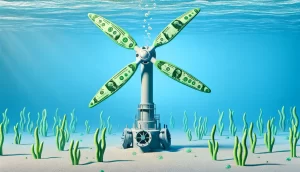This is the second of a two-part series on technologies used to provide power in the deep sea. In this article I highlight some of the technologies used to produce power from waves, ocean currents, thermal gradients, sediments, and even hydrothermal vents.
In Part One of this article series I mentioned a variety of instruments that need power in the deep sea. One group that is particularly interested in this area of study is the US Navy, as evidenced through their “Forward-Deployed Energy and Communications Outpost (FDECO) research program that was launched back in 2016/2017 [1]. Under this program the Office of Naval Research will develop a system of subsea nodes that can dock underwater vehicles, recharge them, and transfer data to and from the vehicle before sending it back out on mission. The key component to this system is providing a reliable and persistent energy source. Keeping this specific application in mind, let’s look at some of the power sources that may be able to help.
Marine Energy
Marine energy is a form of renewable energy that involves converting energy from ocean waves, tides, currents, and thermal or salinity gradients. Some of these marine energy resources are specific to certain areas. For example, tidal energy is largely constrained to the coasts where water flows at relatively high velocity through restricted passages with the rise and fall of the tide. In the deep, there are fewer underwater obstructions to restrict flow which makes generating energy difficult.
Wave Energy
The energy contained in a wave is largely limited to the top of the water column and decreases rapidly with depth. This means that wave energy converters are most appropriate for the surface or shallow depths, not the deep sea. However, it’s possible to extract energy from waves near the surface and then deliver it down to depth, or have the the system that needs power come to the surface.

There few wave energy technologies worth mentioning, but this list is by no means exhaustive. Ocean Power Technologies and Oscilla Power are two US-based companies that are developing a surface system that extracts the energy from the up-and-down motion of a wave to produce electricity, what’s called a point absorber. CalWave Power Technologies and M3 Wave are working on submerged designs that use the pressure difference of passing waves to generate electricity, but these systems are only effective to depths of around fifty meters, after which the wave action on the surface has little impact.



Wave energy converters make sense for deep sea power if it’s acceptable to have a device near the surface and then transfer the power, but they aren’t well-suited to the deep. If having something on the surface is unacceptable, there are other ways to provide power subsea.
Ocean Current Energy
Ocean currents are like underwater rivers, capable of flowing at speeds of four knots or more in some places. But for the vast majority of the deep ocean currents are more of a lazy river, ambling along at less than a knot in most places. While this is not fast by any stretch of the imagination, there is energy to be extracted from this moving fluid. EC-OG, a UK-based company is actively developing a deepsea vertical axis turbine coupled with a battery storage system, which they’ve appropriately named the Subsea Power Hub. It’s unclear on the power output of this system and what current flow is required, but initial tests from the company look promising and it’s certainly a group to keep an eye on.
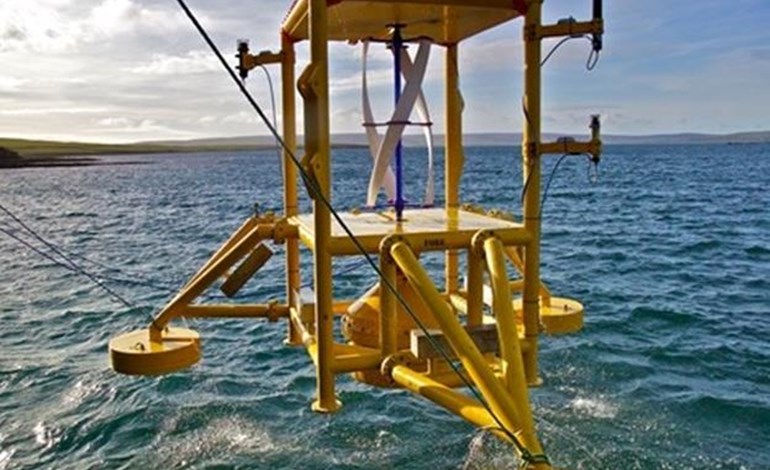
Ocean Thermal Energy Conversion
Aside from kinetic energy of flowing seawater, energy can also be extracted from thermal gradients. These are simply temperature differences within the water column where (generally speaking) warm waters are found at the surface and cold waters are found at depth. Ocean thermal energy conversion (OTEC) is the name of the technologies that exploit this temperature difference to produce energy.
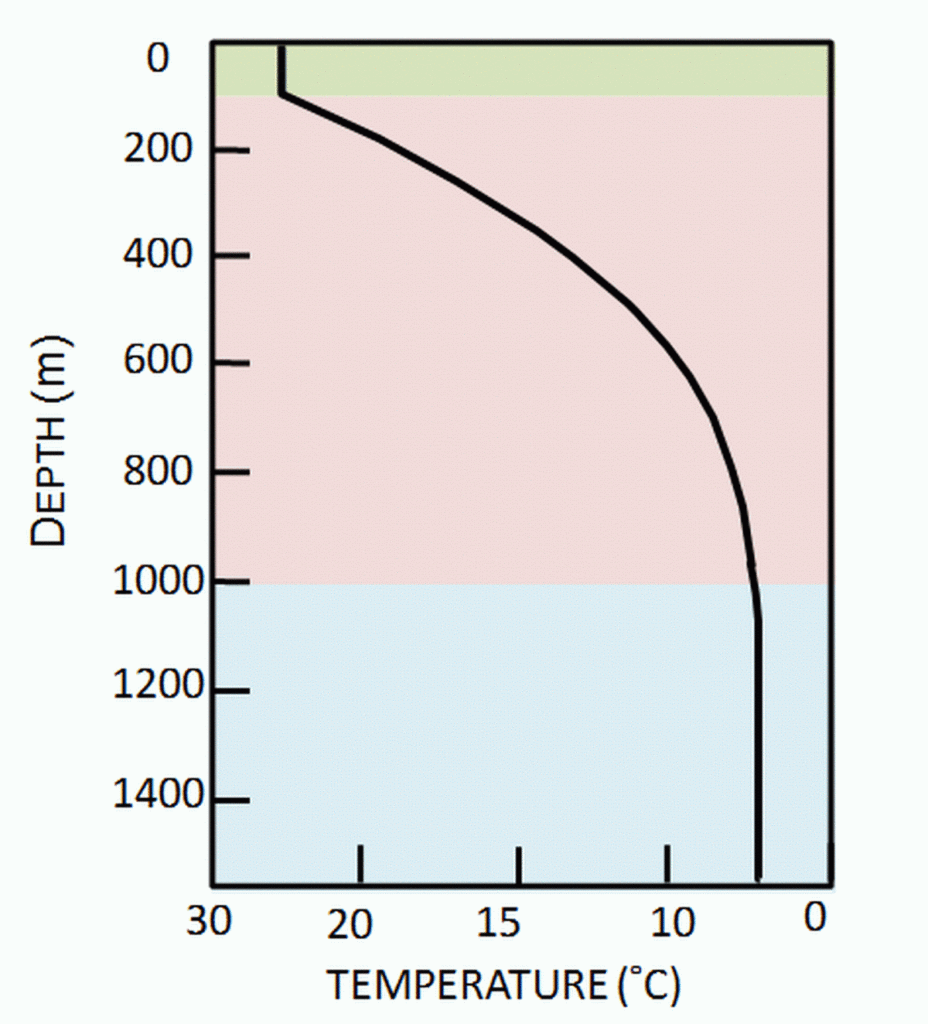
Most forms of OTEC are large structures that resemble offshore oil & gas platforms much too big for our purposes. But there are other smaller technologies, like the SL1 Thermal Engine (or Thermal Recharging Battery) made by Seatrec that can be used in devices like profiling floats. Seatrec’s device uses temperature differences as small as ten degrees centigrade to melt or solidify a waxy phase change material which in-turn produces a pressure change of a gas used to drive a turbine to produce electricity [2]. To tap into this gradient, the device needs to move up and down in the water column, a task profiling floats are specifically designed to do. The Seatrec device doesn’t produce tons of energy, but it can operate for many cycles and thus allow a more persistent presence.
Hydrothermal Vents
In some places of the ocean the temperature changes can be more extreme. Hydrothermal vents are vents on the seafloor that spew out super hot water heated by magma. The seawater ejected from vents is mineral rich, and over time these minerals build large towering structures around the vent. The result is what looks like an exhaust pipe sticking out of the seafloor. The seawater around these chimneys might be just above freezing, but the water coming out of the vent might be close to 700 degrees fahrenheit! With a temperature differential this large, it is possible to exploit hydrothermal vents for energy. This is exactly what the US Navy’s Office of Naval Research is investigating through the PREUS program [3].

Diagram of how hydrothermal vents are formed. Source: Woods Hole Oceanographic Institute 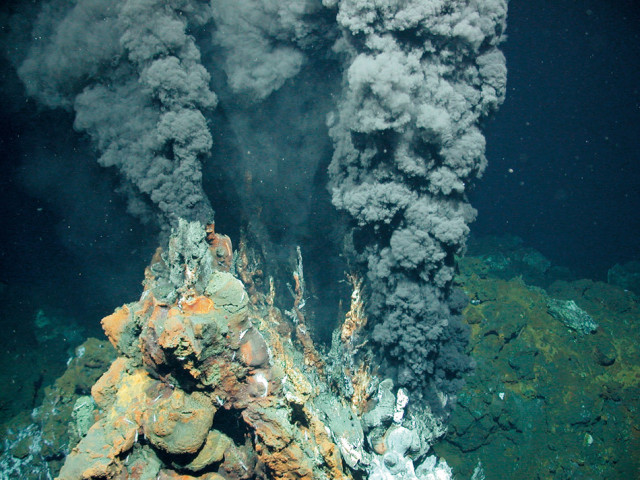
Hydrothermal Vent. Source: Five Oceans
I was able to find two examples of this technology. One is from a company called Creare who developed a prototype for the US Navy, and another from the Maritime Applied Physics Corporation (MAPC) [4][5] that tested their device on the Axial Seamount Cable Array offshore Washington state. These technologies are largely research projects and aren’t commercially available yet, but that might change soon.
According to one paper, a vent is theoretically capable of producing around four megawatts of electricity [6]. However, in a more recent study some researchers actually developed a system and were able to maintain sustained production of only 2-4 watts [7]. It’s not clear where in this spectrum the Creare or the MAPC devices fell. A couple of watts is nowhere close to the theoretically potential, but it’s a start and maybe just enough for some deep sea applications.
Fuel Cells
In Part I I discussed hydrogen fuel cells as a temporary power solution, but like batteries they need to be ‘recharged’ with a fresh supply of hydrogen. Not all fuel cells need to bring their own fuel with them however. One alternative is the Microbial Fuel Cell (MFC). A MFC functions in a similar way to a hydrogen fuel cell, but instead of hydrogen fuel a MFC uses microorganisms to drive the chemical reaction needed to produce electricity.
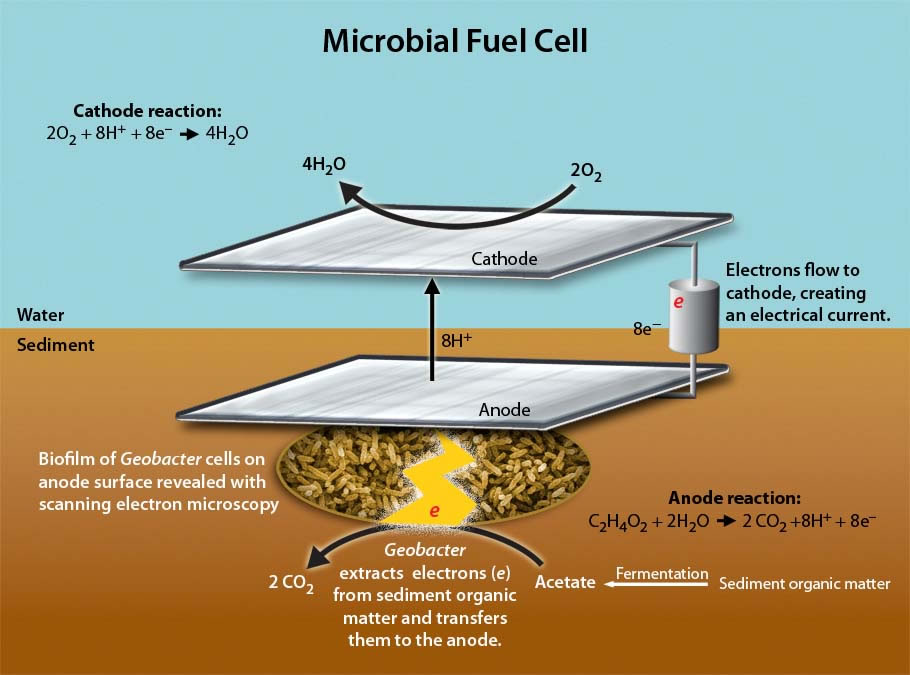
Microbial Fuel Cell Diagram. 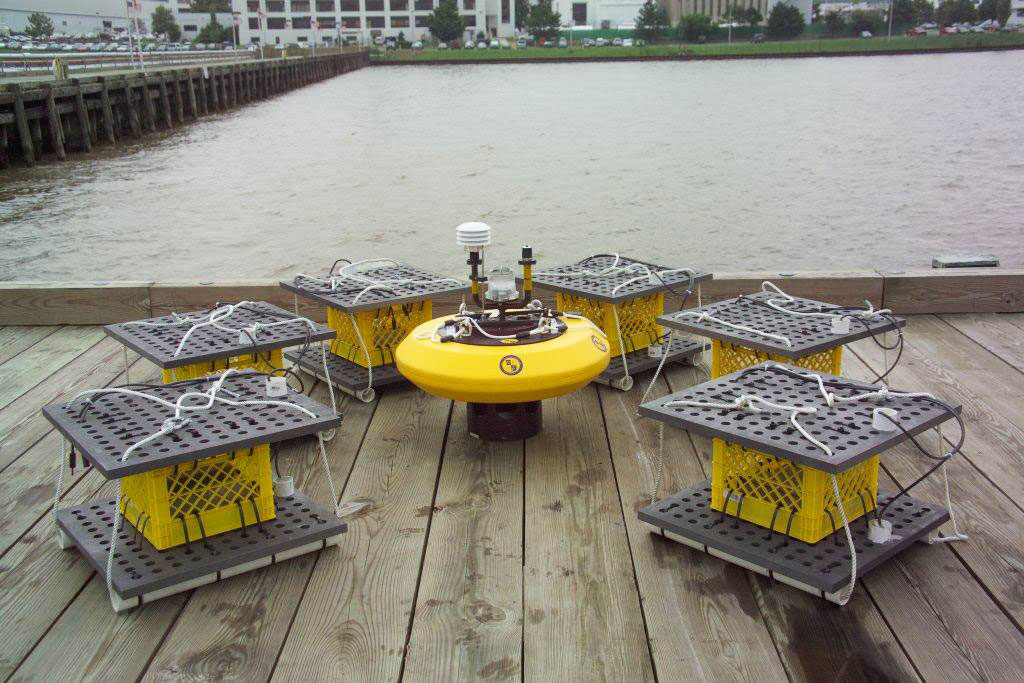
Benthic Microbial Fuel Cell. Source: Naval Research Lab.
On the seafloor, bacteria that live in the sediment consume decaying organisms and as they feed they produce carbon dioxide and hydrogen which are used to produce electricity in the fuel cell (read more about how it works here). Benthic microbial fuel cells (BMFCs), as these devices are known, do not produce a tremendous amount of power, generally measured on the order of 10 to 30 milliwatts per square meter of footprint [8]. By this point it should come as no surprise that the US Navy funded this research on BMFCs as well.
A different version of fuel cell under development is looking to use methane seeps from the sea floor. Methane has been found to seep through cracks in the ocean bottom at more than a thousand locations all over the world [9]. The Defense Advanced Research Projects Agency (DARPA) this past August 2018 launched a project to see what solutions are possible to potentially harvest these methane seeps to provide methane as fuel [10]. Perhaps a little far-fetched, but that’s what DARPA is known for.
There are quite a few technologies for deep sea power. A simple LiON battery is all that is needed for a cheap low-power temporary solution. For longer-term applications like FDECO, batteries won’t cut it and something like an ocean current turbine might make more sense. Not all of the technologies mentioned here are at the same level of commercial readiness, but they are all potential ways to address one the most pressing constraints on ocean exploration and monitoring: persistent power in the deep sea.
References
[1] Breaking Defense. “The 7-11 For Robot Subs: Underwater Plug And Stay Hubs”. Freedberg, Sydney. May 21, 2015. https://breakingdefense.com/2015/05/the-7-11-for-robot-subs-underwater-plug-and-stay-hubs/
[2] Medium – Deep Tech. “Thermal Recharging Technology: A Game Changing Clean Energy Source”. Greenberg, Joel. Oct 24, 2016. https://medium.com/dissected-by-propel-x/thermal-recharging-technology-a-game-changing-clean-energy-source-e6002279615a
[3] Forbes. “Submarine Drones Drive Demand For Subsea Power Plants”. Pentland, William. May 17, 2014. https://www.forbes.com/sites/williampentland/2014/05/17/submarine-drones-drive-demand-for-subsea-power-plants/#63dec5bf5541
[4] Creare. “Harnessing Energy From Deep Sea Hydrothermal Vents” http://www.creare.com/power-system-hydrothermal-vents/
[5] Maritime Applied Physics Corporation. “Deep Sea Energy”. http://www.mapcorp.com/our-work/deep-sea-energy/
[6] Hiriart, Gerardo & Hernandez Carrillo, Isaias. (2010). Electricity Generation from Hydrothermal Vents. https://www.researchgate.net/publication/320324660_Electricity_Generation_from_Hydrothermal_Vents
[7] Yu Xie, Shi-jun Wu, Can-jun Yang, Generation of electricity from deep-sea hydrothermal vents with a thermoelectric converter, Applied Energy, Volume 164, 2016, Pages 620-627 https://www.sciencedirect.com/science/article/pii/S0306261915016098
[8] Valliappan, Karuppiah & Li, Zhi-Yong. (2015). Marine Microbial Fuel Cells. 10.1201/b18494-31. https://www.researchgate.net/publication/283038648_Marine_Microbial_Fuel_Cells
[9] Floyd, Mark. Oregon State University. (2018). “OSU, NOAA researchers document widespread methane seeps off Oregon coast”. https://today.oregonstate.edu/news/osu-noaa-researchers-document-widespread-methane-seeps-oregon-coast
[10] Defense Advanced Research Projects Agency Industry Day. https://sbir_industryday.darpa.mil/Presentations/ST18C-005-Waterson.pdf

